This report serves to describe the mutational landscape and properties of a given individual set, as well as rank genes and genesets according to mutational significance. MutSig v2.0 was used to generate the results found in this report.
-
Working with individual set: PRAD-TP
-
Number of patients in set: 83
The input for this pipeline is a set of individuals with the following files associated for each:
-
An annotated .maf file describing the mutations called for the respective individual, and their properties.
-
A .wig file that contains information about the coverage of the sample.
-
MAF used for this analysis:PRAD-TP.final_analysis_set.maf
-
Significantly mutated genes (q ≤ 0.1): 11
-
Mutations seen in COSMIC: 26
-
Significantly mutated genes in COSMIC territory: 6
-
Genes with clustered mutations (≤ 3 aa apart): 11
-
Significantly mutated genesets: 2
-
Significantly mutated genesets: (excluding sig. mutated genes):0
-
Read 83 MAFs of type "Broad"
-
Total number of mutations in input MAFs: 5917
-
After removing 18 mutations outside chr1-24: 5899
-
After removing 602 blacklisted mutations: 5297
-
After removing 219 noncoding mutations: 5078
-
Number of mutations before filtering: 5078
-
After removing 135 mutations outside gene set: 4943
-
After removing 4 mutations outside category set: 4939
Table 1. Get Full Table Table representing breakdown of mutations by type.
| type | count |
|---|---|
| Frame_Shift_Del | 145 |
| Frame_Shift_Ins | 65 |
| In_Frame_Del | 42 |
| In_Frame_Ins | 7 |
| Missense_Mutation | 3041 |
| Nonsense_Mutation | 173 |
| Nonstop_Mutation | 2 |
| Silent | 1368 |
| Splice_Site | 88 |
| Translation_Start_Site | 8 |
| Total | 4939 |
Table 2. Get Full Table A breakdown of mutation rates per category discovered for this individual set.
| category | n | N | rate | rate_per_mb | relative_rate | exp_ns_s_ratio |
|---|---|---|---|---|---|---|
| *CpG->T | 816 | 138713067 | 5.9e-06 | 5.9 | 4.1 | 2.1 |
| *Np(A/C/T)->transit | 829 | 1965699488 | 4.2e-07 | 0.42 | 0.29 | 2 |
| *ApG->G | 94 | 381313535 | 2.5e-07 | 0.25 | 0.17 | 2.1 |
| transver | 1310 | 2485726090 | 5.3e-07 | 0.53 | 0.37 | 5 |
| indel+null | 519 | 2485726090 | 2.1e-07 | 0.21 | 0.15 | NaN |
| double_null | 3 | 2485726090 | 1.2e-09 | 0.0012 | 0.00084 | NaN |
| Total | 3571 | 2485726090 | 1.4e-06 | 1.4 | 1 | 3.5 |
The x axis represents the samples. The y axis represents the exons, one row per exon, and they are sorted by average coverage across samples. For exons with exactly the same average coverage, they are sorted next by the %GC of the exon. (The secondary sort is especially useful for the zero-coverage exons at the bottom).
Figure 1.
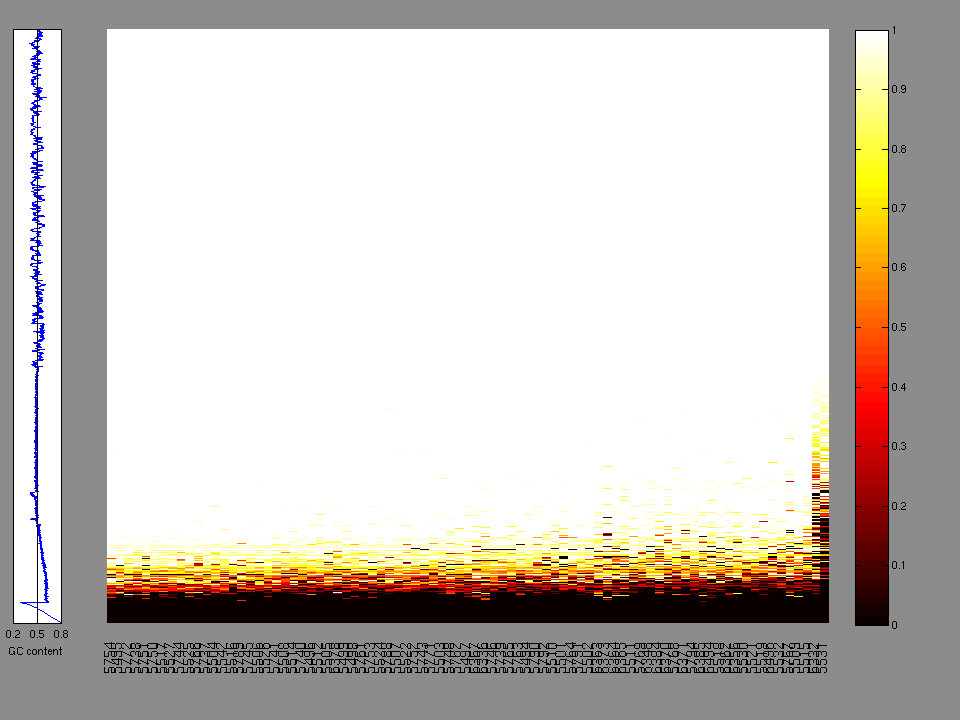
Figure 2. Patients counts and rates file used to generate this plot: PRAD-TP.patients.counts_and_rates.txt

Figure 3. Get High-res Image The matrix in the center of the figure represents individual mutations in patient samples, color-coded by type of mutation, for the significantly mutated genes. The rate of synonymous and non-synonymous mutations is displayed at the top of the matrix. The barplot on the left of the matrix shows the number of mutations in each gene. The percentages represent the fraction of tumors with at least one mutation in the specified gene. The barplot to the right of the matrix displays the q-values for the most significantly mutated genes. The purple boxplots below the matrix (only displayed if required columns are present in the provided MAF) represent the distributions of allelic fractions observed in each sample. The plot at the bottom represents the base substitution distribution of individual samples, using the same categories that were used to calculate significance.
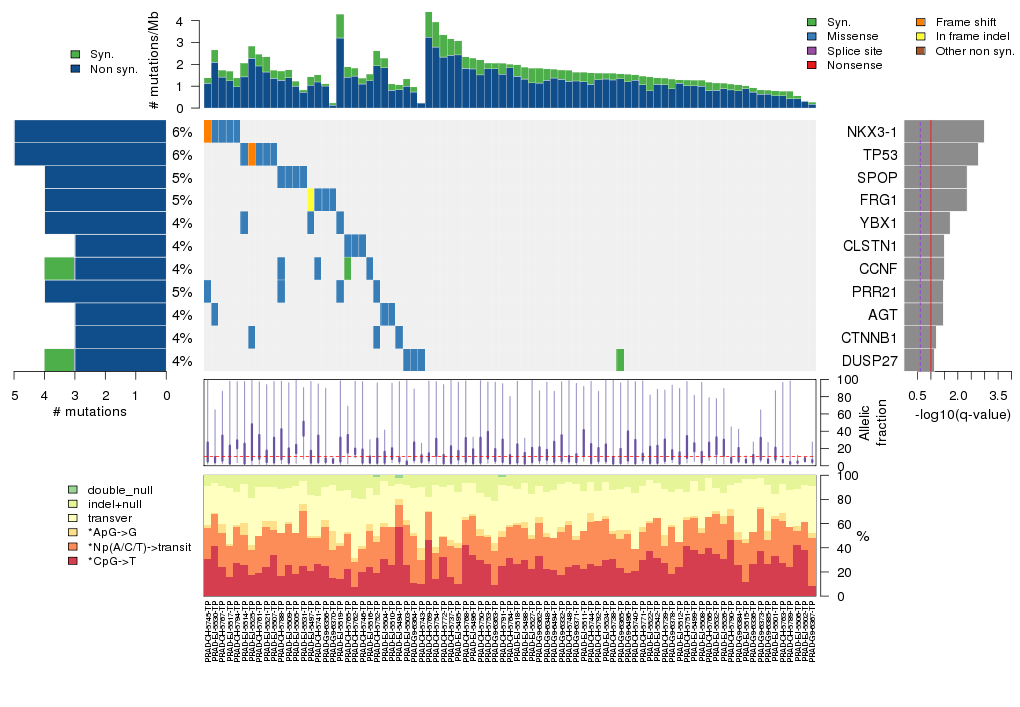
Column Descriptions:
-
N = number of sequenced bases in this gene across the individual set
-
n = number of (nonsilent) mutations in this gene across the individual set
-
npat = number of patients (individuals) with at least one nonsilent mutation
-
nsite = number of unique sites having a non-silent mutation
-
nsil = number of silent mutations in this gene across the individual set
-
n1 = number of nonsilent mutations of type: *CpG->T
-
n2 = number of nonsilent mutations of type: *Np(A/C/T)->transit
-
n3 = number of nonsilent mutations of type: *ApG->G
-
n4 = number of nonsilent mutations of type: transver
-
n5 = number of nonsilent mutations of type: indel+null
-
n6 = number of nonsilent mutations of type: double_null
-
p_classic = p-value for the observed amount of nonsilent mutations being elevated in this gene
-
p_ns_s = p-value for the observed nonsilent/silent ratio being elevated in this gene
-
p_cons = p-value for enrichment of mutations at evolutionarily most-conserved sites in gene
-
p_joint = p-value for clustering + conservation
-
p = p-value (overall)
-
q = q-value, False Discovery Rate (Benjamini-Hochberg procedure)
Table 3. Get Full Table A Ranked List of Significantly Mutated Genes. Number of significant genes found: 11. Number of genes displayed: 35. Click on a gene name to display its stick figure depicting the distribution of mutations and mutation types across the chosen gene (this feature may not be available for all significant genes).
| rank | gene | description | N | n | npat | nsite | nsil | n1 | n2 | n3 | n4 | n5 | n6 | p_classic | p_ns_s | p_cons | p_joint | p | q |
|---|---|---|---|---|---|---|---|---|---|---|---|---|---|---|---|---|---|---|---|
| 1 | NKX3-1 | NK3 homeobox 1 | 43527 | 5 | 5 | 5 | 0 | 0 | 2 | 0 | 2 | 1 | 0 | 2.1e-09 | 0.26 | 0.013 | 0.034 | 1.8e-09 | 0.000032 |
| 2 | TP53 | tumor protein p53 | 105521 | 5 | 5 | 5 | 0 | 3 | 0 | 0 | 1 | 1 | 0 | 5.5e-07 | 0.34 | 0.002 | 0.0071 | 8e-08 | 0.00072 |
| 3 | SPOP | speckle-type POZ protein | 96345 | 4 | 4 | 3 | 0 | 0 | 0 | 1 | 3 | 0 | 0 | 3.8e-06 | 0.39 | 0.32 | 0.0097 | 6.6e-07 | 0.0035 |
| 4 | FRG1 | FSHD region gene 1 | 67208 | 4 | 4 | 2 | 0 | 0 | 0 | 0 | 3 | 1 | 0 | 2.9e-07 | 0.65 | 1 | 0.15 | 7.7e-07 | 0.0035 |
| 5 | YBX1 | Y box binding protein 1 | 68945 | 4 | 3 | 2 | 0 | 0 | 2 | 0 | 2 | 0 | 0 | 0.00012 | 0.32 | 0.0093 | 0.0026 | 5e-06 | 0.018 |
| 6 | CLSTN1 | calsyntenin 1 | 242387 | 3 | 3 | 1 | 0 | 0 | 0 | 0 | 3 | 0 | 0 | 0.0056 | 0.6 | 0.083 | 0.00012 | 1e-05 | 0.03 |
| 7 | CCNF | cyclin F | 199411 | 3 | 3 | 1 | 1 | 0 | 0 | 0 | 3 | 0 | 0 | 0.0024 | 0.79 | 0.034 | 0.00032 | 0.000012 | 0.03 |
| 8 | PRR21 | proline rich 21 | 58941 | 4 | 4 | 4 | 0 | 1 | 1 | 0 | 2 | 0 | 0 | 2.3e-06 | 0.26 | 0.95 | 0.42 | 0.000014 | 0.032 |
| 9 | AGT | angiotensinogen (serpin peptidase inhibitor, clade A, member 8) | 122342 | 3 | 3 | 1 | 0 | 0 | 0 | 0 | 3 | 0 | 0 | 0.00053 | 0.53 | 1 | 0.0021 | 0.000016 | 0.033 |
| 10 | CTNNB1 | catenin (cadherin-associated protein), beta 1, 88kDa | 199245 | 3 | 3 | 3 | 0 | 0 | 1 | 0 | 2 | 0 | 0 | 0.0011 | 0.46 | 0.3 | 0.0021 | 0.000033 | 0.059 |
| 11 | DUSP27 | dual specificity phosphatase 27 (putative) | 264959 | 3 | 3 | 1 | 1 | 0 | 0 | 0 | 3 | 0 | 0 | 0.0014 | 0.82 | 0.94 | 0.0023 | 0.000044 | 0.073 |
| 12 | OR4D5 | olfactory receptor, family 4, subfamily D, member 5 | 79763 | 3 | 3 | 3 | 0 | 2 | 0 | 0 | 1 | 0 | 0 | 0.000012 | 0.46 | 0.32 | 0.56 | 0.000083 | 0.13 |
| 13 | OR6N1 | olfactory receptor, family 6, subfamily N, member 1 | 78146 | 3 | 3 | 2 | 0 | 0 | 0 | 2 | 1 | 0 | 0 | 0.000012 | 0.46 | 0.55 | 0.62 | 0.000097 | 0.14 |
| 14 | MLL3 | myeloid/lymphoid or mixed-lineage leukemia 3 | 1228308 | 8 | 7 | 7 | 0 | 0 | 1 | 0 | 2 | 4 | 1 | 0.00012 | 0.23 | 0.78 | 0.15 | 0.00022 | 0.28 |
| 15 | C1orf116 | chromosome 1 open reading frame 116 | 150780 | 2 | 2 | 2 | 0 | 0 | 1 | 0 | 1 | 0 | 0 | 0.015 | 0.52 | 0.0025 | 0.002 | 0.00036 | 0.43 |
| 16 | CNTNAP5 | contactin associated protein-like 5 | 309961 | 5 | 5 | 5 | 0 | 2 | 0 | 0 | 2 | 1 | 0 | 5e-05 | 0.2 | 0.85 | 0.71 | 0.0004 | 0.45 |
| 17 | BCL6 | B-cell CLL/lymphoma 6 (zinc finger protein 51) | 178187 | 3 | 3 | 3 | 1 | 1 | 2 | 0 | 0 | 0 | 0 | 0.00051 | 0.6 | 0.94 | 0.074 | 0.00042 | 0.45 |
| 18 | ATM | ataxia telangiectasia mutated | 780236 | 5 | 5 | 5 | 0 | 0 | 4 | 0 | 1 | 0 | 0 | 0.0018 | 0.18 | 0.017 | 0.023 | 0.00047 | 0.45 |
| 19 | SLITRK4 | SLIT and NTRK-like family, member 4 | 208728 | 3 | 3 | 2 | 0 | 0 | 0 | 0 | 0 | 3 | 0 | 0.00034 | 0.72 | 1 | 0.13 | 0.00047 | 0.45 |
| 20 | OR5L2 | olfactory receptor, family 5, subfamily L, member 2 | 78017 | 3 | 3 | 3 | 0 | 0 | 0 | 0 | 3 | 0 | 0 | 0.0001 | 0.55 | 0.2 | 0.46 | 0.00051 | 0.47 |
| 21 | OR2AE1 | olfactory receptor, family 2, subfamily AE, member 1 | 81008 | 2 | 2 | 2 | 0 | 1 | 0 | 0 | 0 | 1 | 0 | 0.00098 | 0.62 | 0.0093 | 0.051 | 0.00055 | 0.47 |
| 22 | AIM2 | absent in melanoma 2 | 87306 | 3 | 3 | 3 | 0 | 0 | 1 | 0 | 1 | 1 | 0 | 0.00011 | 0.57 | 0.82 | 0.81 | 0.00094 | 0.75 |
| 23 | GPATCH4 | G patch domain containing 4 | 97579 | 2 | 2 | 1 | 0 | 0 | 0 | 0 | 0 | 2 | 0 | 0.0013 | 1 | 0.3 | 0.075 | 0.00099 | 0.75 |
| 24 | PCDHB14 | protocadherin beta 14 | 199174 | 3 | 3 | 3 | 0 | 1 | 0 | 0 | 1 | 1 | 0 | 0.00047 | 0.27 | 0.59 | 0.22 | 0.0011 | 0.75 |
| 25 | ZMYM3 | zinc finger, MYM-type 3 | 288038 | 5 | 4 | 5 | 0 | 0 | 0 | 0 | 2 | 3 | 0 | 0.00026 | 0.48 | 0.21 | 0.4 | 0.0011 | 0.75 |
| 26 | LPHN3 | latrophilin 3 | 311602 | 4 | 4 | 4 | 1 | 2 | 1 | 0 | 1 | 0 | 0 | 0.00034 | 0.61 | 0.57 | 0.31 | 0.0011 | 0.75 |
| 27 | CROCC | ciliary rootlet coiled-coil, rootletin | 295882 | 4 | 4 | 2 | 1 | 3 | 0 | 0 | 1 | 0 | 0 | 0.00063 | 0.59 | 0.76 | 0.18 | 0.0011 | 0.75 |
| 28 | PTEN | phosphatase and tensin homolog (mutated in multiple advanced cancers 1) | 102374 | 3 | 3 | 3 | 0 | 0 | 1 | 0 | 1 | 1 | 0 | 0.00016 | 0.4 | 0.14 | 0.74 | 0.0012 | 0.75 |
| 29 | SETD5 | SET domain containing 5 | 345156 | 4 | 1 | 4 | 1 | 0 | 3 | 0 | 1 | 0 | 0 | 0.27 | 0.54 | 0.46 | 0.00047 | 0.0013 | 0.75 |
| 30 | OR5B12 | olfactory receptor, family 5, subfamily B, member 12 | 78709 | 2 | 2 | 2 | 0 | 1 | 0 | 0 | 1 | 0 | 0 | 0.00063 | 0.83 | 0.11 | 0.2 | 0.0013 | 0.75 |
| 31 | OR52A1 | olfactory receptor, family 52, subfamily A, member 1 | 78103 | 2 | 2 | 2 | 0 | 2 | 0 | 0 | 0 | 0 | 0 | 0.00017 | 0.84 | 0.64 | 0.78 | 0.0013 | 0.75 |
| 32 | GGTLC2 | gamma-glutamyltransferase light chain 2 | 47824 | 2 | 2 | 2 | 1 | 0 | 0 | 1 | 1 | 0 | 0 | 0.00013 | 0.81 | 0.16 | 1 | 0.0013 | 0.75 |
| 33 | LHX3 | LIM homeobox 3 | 74497 | 2 | 2 | 2 | 0 | 0 | 1 | 0 | 1 | 0 | 0 | 0.0026 | 0.52 | 0.055 | 0.058 | 0.0015 | 0.8 |
| 34 | TAF1L | TAF1 RNA polymerase II, TATA box binding protein (TBP)-associated factor, 210kDa-like | 455255 | 3 | 3 | 3 | 0 | 1 | 2 | 0 | 0 | 0 | 0 | 0.013 | 0.38 | 0.022 | 0.012 | 0.0015 | 0.8 |
| 35 | CRIPAK | cysteine-rich PAK1 inhibitor | 110493 | 3 | 3 | 3 | 1 | 0 | 1 | 0 | 2 | 0 | 0 | 0.00026 | 0.7 | 1 | 0.62 | 0.0016 | 0.8 |
Figure S1. This figure depicts the distribution of mutations and mutation types across the NKX3-1 significant gene.

Figure S2. This figure depicts the distribution of mutations and mutation types across the TP53 significant gene.

Figure S3. This figure depicts the distribution of mutations and mutation types across the SPOP significant gene.

Figure S4. This figure depicts the distribution of mutations and mutation types across the FRG1 significant gene.
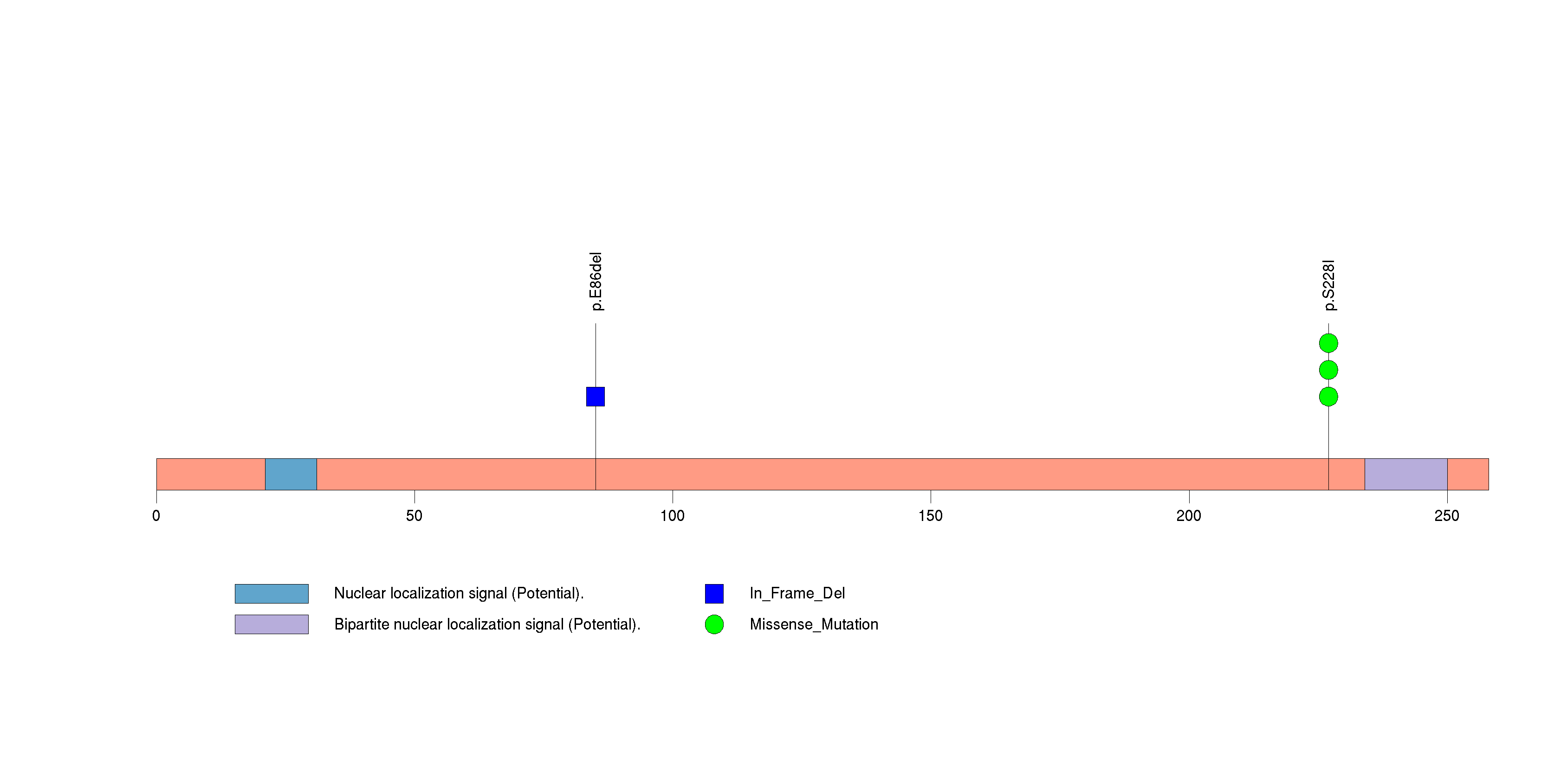
Figure S5. This figure depicts the distribution of mutations and mutation types across the YBX1 significant gene.
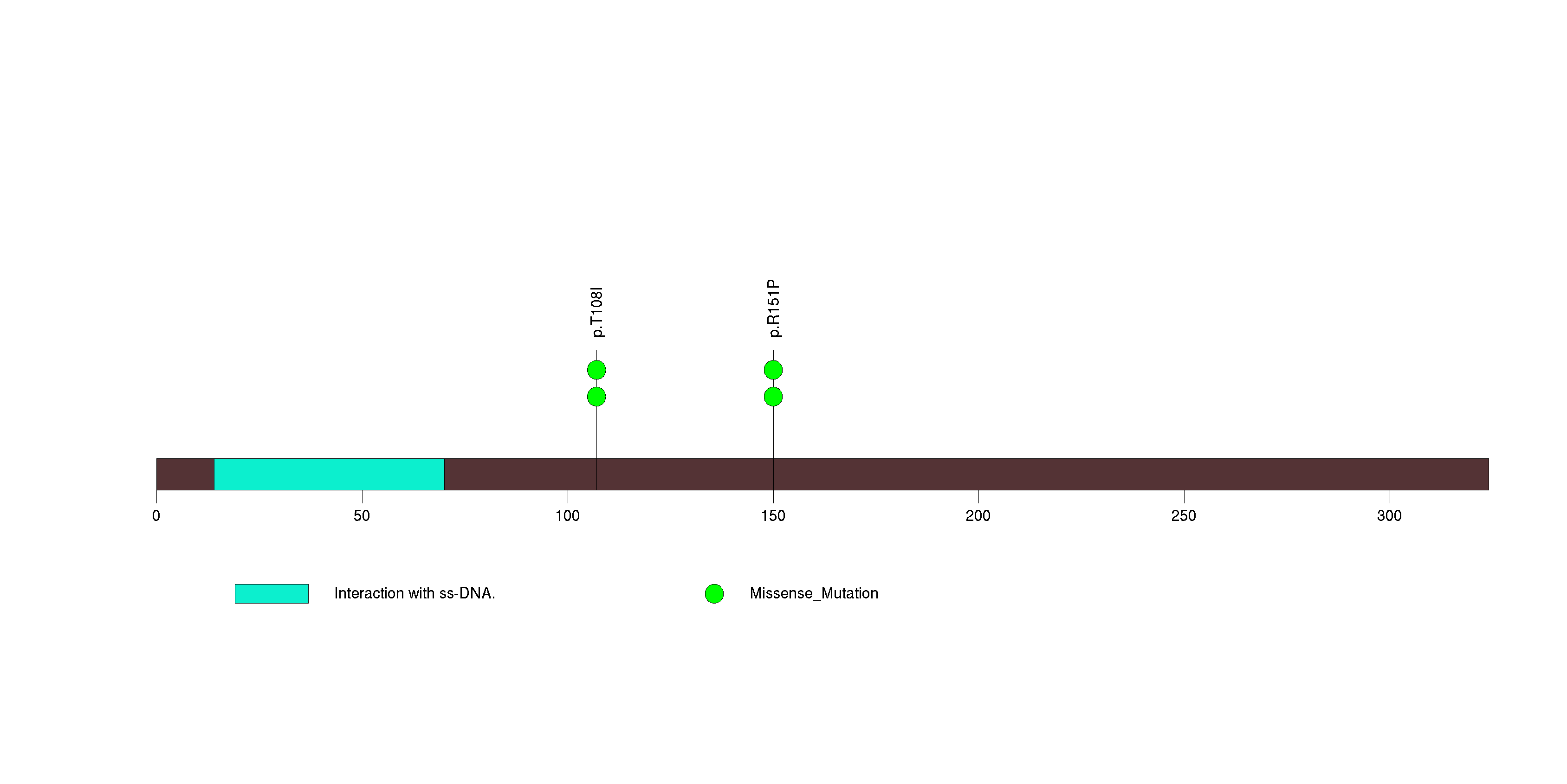
Figure S6. This figure depicts the distribution of mutations and mutation types across the CLSTN1 significant gene.
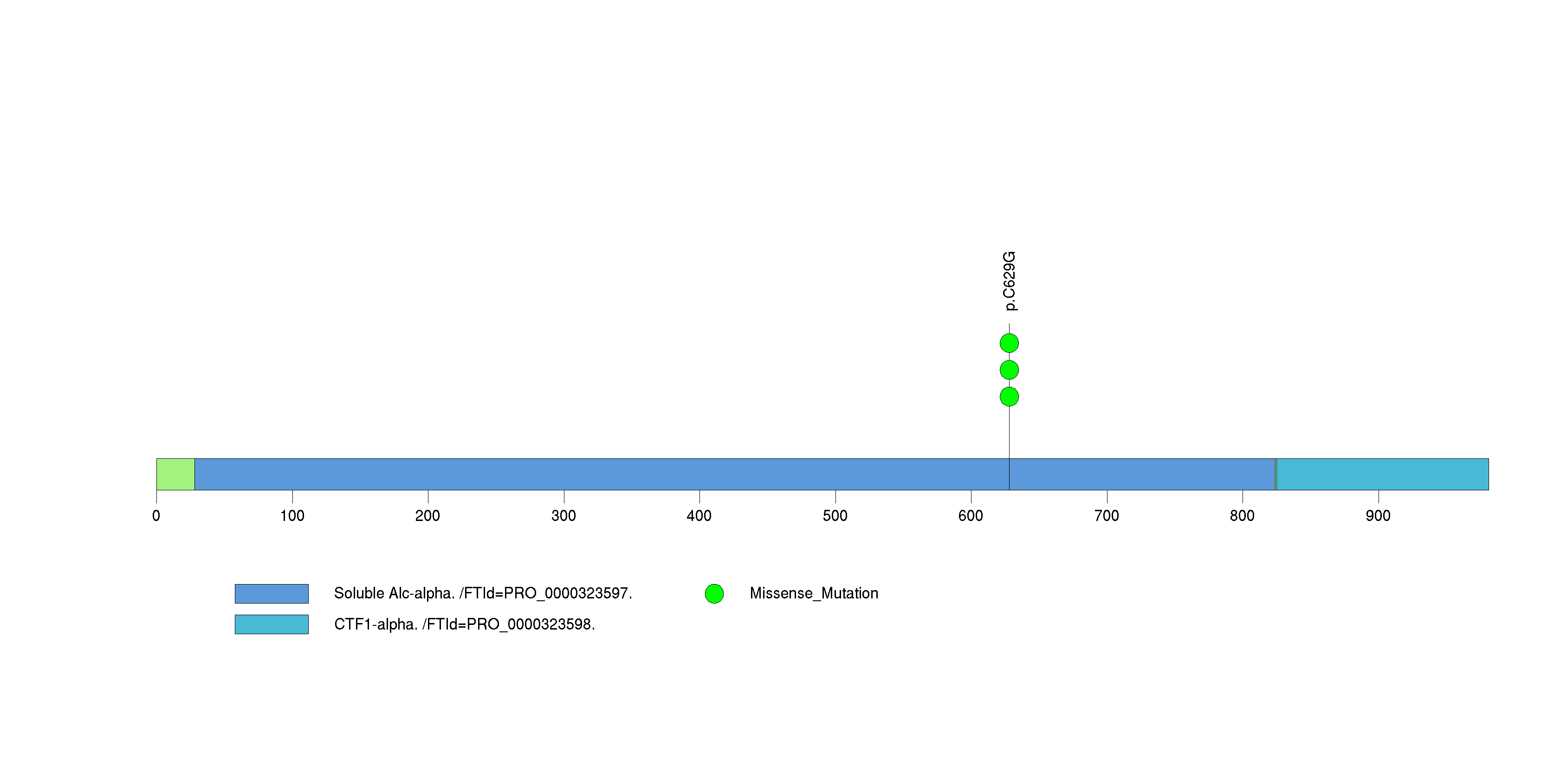
Figure S7. This figure depicts the distribution of mutations and mutation types across the CCNF significant gene.
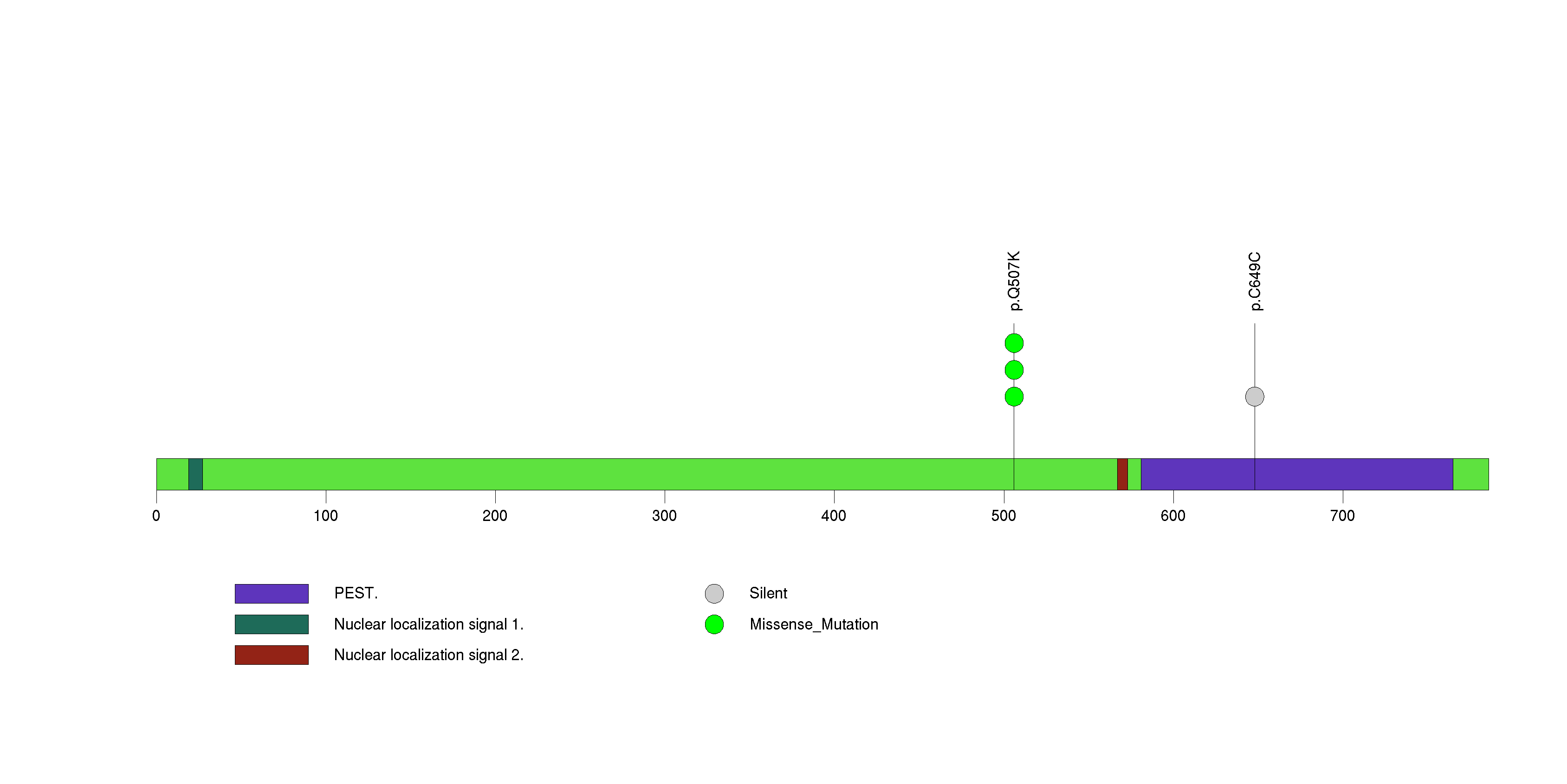
Figure S8. This figure depicts the distribution of mutations and mutation types across the PRR21 significant gene.
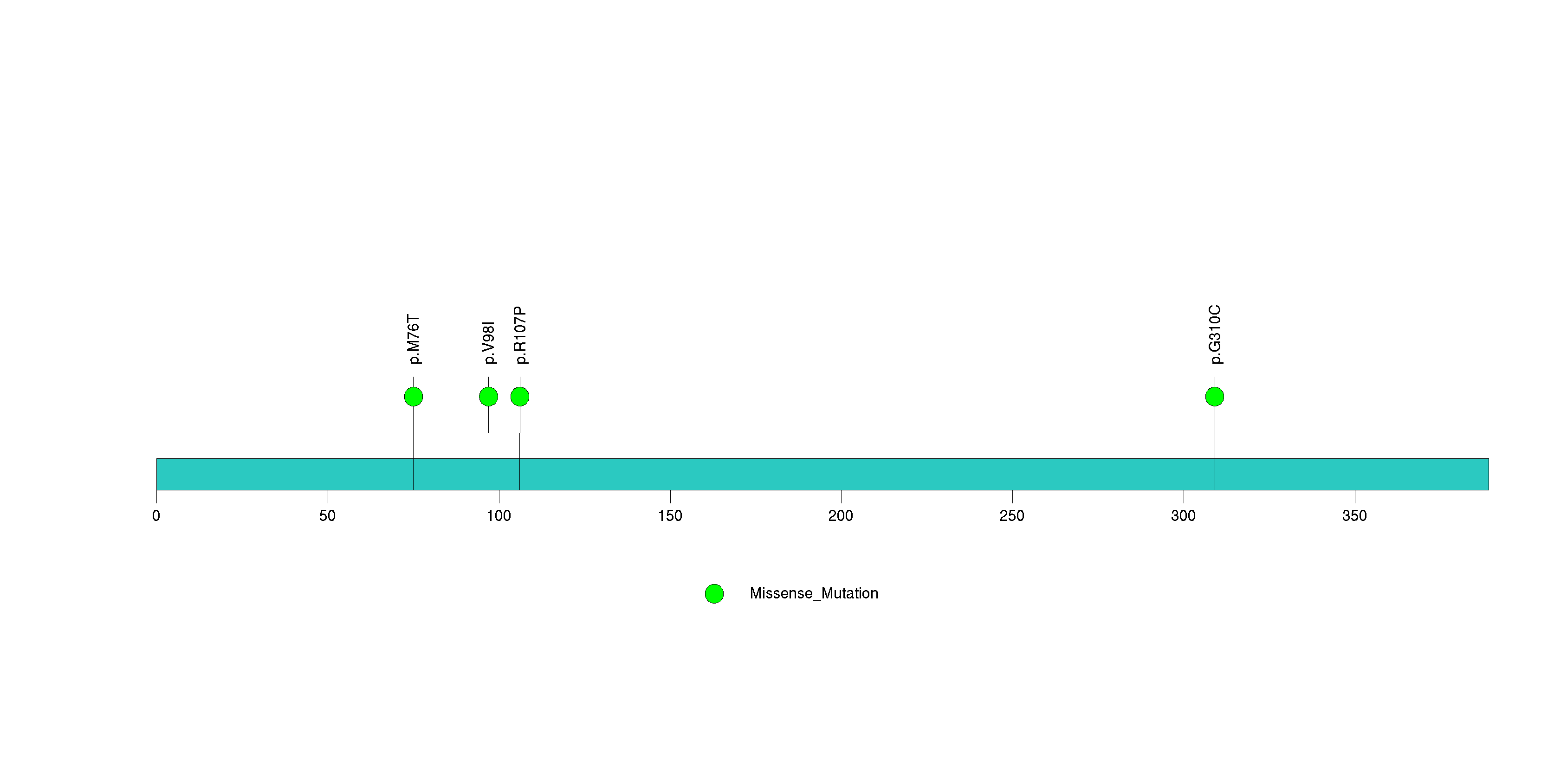
Figure S9. This figure depicts the distribution of mutations and mutation types across the AGT significant gene.

Figure S10. This figure depicts the distribution of mutations and mutation types across the CTNNB1 significant gene.

Figure S11. This figure depicts the distribution of mutations and mutation types across the DUSP27 significant gene.

In this analysis, COSMIC is used as a filter to increase power by restricting the territory of each gene. Cosmic version: v48.
Table 4. Get Full Table Significantly mutated genes (COSMIC territory only). To access the database please go to: COSMIC. Number of significant genes found: 6. Number of genes displayed: 10
| rank | gene | description | n | cos | n_cos | N_cos | cos_ev | p | q |
|---|---|---|---|---|---|---|---|---|---|
| 1 | TP53 | tumor protein p53 | 5 | 356 | 5 | 29548 | 1608 | 1.1e-09 | 5e-06 |
| 2 | CTNNB1 | catenin (cadherin-associated protein), beta 1, 88kDa | 3 | 138 | 3 | 11454 | 1229 | 7.3e-07 | 0.0017 |
| 3 | PTEN | phosphatase and tensin homolog (mutated in multiple advanced cancers 1) | 3 | 767 | 3 | 63661 | 15 | 0.00012 | 0.09 |
| 4 | ACSM2B | acyl-CoA synthetase medium-chain family member 2B | 1 | 1 | 1 | 83 | 1 | 0.00012 | 0.09 |
| 5 | BRE | brain and reproductive organ-expressed (TNFRSF1A modulator) | 1 | 1 | 1 | 83 | 1 | 0.00012 | 0.09 |
| 6 | KCNH1 | potassium voltage-gated channel, subfamily H (eag-related), member 1 | 1 | 1 | 1 | 83 | 1 | 0.00012 | 0.09 |
| 7 | CHAT | choline acetyltransferase | 2 | 2 | 1 | 166 | 1 | 0.00024 | 0.13 |
| 8 | CYP4F2 | cytochrome P450, family 4, subfamily F, polypeptide 2 | 1 | 2 | 1 | 166 | 2 | 0.00024 | 0.13 |
| 9 | PIK3CA | phosphoinositide-3-kinase, catalytic, alpha polypeptide | 2 | 220 | 2 | 18260 | 355 | 0.00034 | 0.16 |
| 10 | ACVR2A | activin A receptor, type IIA | 1 | 3 | 1 | 249 | 1 | 0.00036 | 0.16 |
Note:
n - number of (nonsilent) mutations in this gene across the individual set.
cos = number of unique mutated sites in this gene in COSMIC
n_cos = overlap between n and cos.
N_cos = number of individuals times cos.
cos_ev = total evidence: number of reports in COSMIC for mutations seen in this gene.
p = p-value for seeing the observed amount of overlap in this gene)
q = q-value, False Discovery Rate (Benjamini-Hochberg procedure)
Table 5. Get Full Table Genes with Clustered Mutations
| num | gene | desc | n | mindist | nmuts0 | nmuts3 | nmuts12 | npairs0 | npairs3 | npairs12 |
|---|---|---|---|---|---|---|---|---|---|---|
| 89 | AGT | angiotensinogen (serpin peptidase inhibitor, clade A, member 8) | 3 | 0 | 3 | 3 | 3 | 3 | 3 | 3 |
| 451 | CCNF | cyclin F | 3 | 0 | 3 | 3 | 3 | 3 | 3 | 3 |
| 544 | CLSTN1 | calsyntenin 1 | 3 | 0 | 3 | 3 | 3 | 3 | 3 | 3 |
| 600 | CROCC | ciliary rootlet coiled-coil, rootletin | 4 | 0 | 3 | 3 | 3 | 3 | 3 | 3 |
| 749 | DUSP27 | dual specificity phosphatase 27 (putative) | 3 | 0 | 3 | 3 | 3 | 3 | 3 | 3 |
| 939 | FRG1 | FSHD region gene 1 | 4 | 0 | 3 | 3 | 3 | 3 | 3 | 3 |
| 2737 | YBX1 | Y box binding protein 1 | 4 | 0 | 2 | 2 | 2 | 2 | 2 | 2 |
| 2363 | SPOP | speckle-type POZ protein | 4 | 0 | 1 | 3 | 3 | 1 | 3 | 3 |
| 1527 | MLL3 | myeloid/lymphoid or mixed-lineage leukemia 3 | 8 | 0 | 1 | 1 | 3 | 1 | 1 | 3 |
| 85 | AGK | acylglycerol kinase | 2 | 0 | 1 | 1 | 1 | 1 | 1 | 1 |
Note:
n - number of mutations in this gene in the individual set.
mindist - distance (in aa) between closest pair of mutations in this gene
npairs3 - how many pairs of mutations are within 3 aa of each other.
npairs12 - how many pairs of mutations are within 12 aa of each other.
Table 6. Get Full Table A Ranked List of Significantly Mutated Genesets. (Source: MSigDB GSEA Cannonical Pathway Set).Number of significant genesets found: 2. Number of genesets displayed: 10
| rank | geneset | description | genes | N_genes | mut_tally | N | n | npat | nsite | nsil | n1 | n2 | n3 | n4 | n5 | n6 | p_ns_s | p | q |
|---|---|---|---|---|---|---|---|---|---|---|---|---|---|---|---|---|---|---|---|
| 1 | SA_G1_AND_S_PHASES | Cdk2, 4, and 6 bind cyclin D in G1, while cdk2/cyclin E promotes the G1/S transition. | ARF1, ARF3, CCND1, CDK2, CDK4, CDKN1A, CDKN1B, CDKN2A, CFL1, E2F1, E2F2, MDM2, NXT1, PRB1, TP53 | 15 | CDKN1B(2), PRB1(2), TP53(5) | 1062488 | 9 | 9 | 9 | 0 | 3 | 1 | 0 | 2 | 3 | 0 | 0.15 | 2e-05 | 0.013 |
| 2 | P53HYPOXIAPATHWAY | Hypoxia induces p53 accumulation and consequent apoptosis with p53-mediated cell cycle arrest, which is present under conditions of DNA damage. | ABCB1, AKT1, ATM, BAX, CDKN1A, CPB2, CSNK1A1, CSNK1D, FHL2, GADD45A, HIC1, HIF1A, HSPA1A, HSPCA, IGFBP3, MAPK8, MDM2, NFKBIB, NQO1, TP53 | 19 | ABCB1(2), AKT1(1), ATM(5), TP53(5) | 2602579 | 13 | 12 | 13 | 0 | 4 | 6 | 0 | 2 | 1 | 0 | 0.015 | 0.00016 | 0.048 |
| 3 | P53PATHWAY | p53 induces cell cycle arrest or apoptosis under conditions of DNA damage. | APAF1, ATM, BAX, BCL2, CCND1, CCNE1, CDK2, CDK4, CDKN1A, E2F1, GADD45A, MDM2, PCNA, RB1, TIMP3, TP53 | 16 | APAF1(1), ATM(5), TP53(5) | 2266716 | 11 | 10 | 11 | 0 | 3 | 5 | 0 | 2 | 1 | 0 | 0.034 | 0.0008 | 0.16 |
| 4 | TERTPATHWAY | hTERC, the RNA subunit of telomerase, and hTERT, the catalytic protein subunit, are required for telomerase activity and are overexpressed in many cancers. | HDAC1, MAX, MYC, SP1, SP3, TP53, WT1, ZNF42 | 7 | SP1(1), TP53(5) | 879118 | 6 | 6 | 6 | 0 | 3 | 1 | 0 | 1 | 1 | 0 | 0.16 | 0.0015 | 0.23 |
| 5 | RBPATHWAY | The ATM protein kinase recognizes DNA damage and blocks cell cycle progression by phosphorylating chk1 and p53, which normally inhibits Rb to allow G1/S transitions. | ATM, CDC2, CDC25A, CDC25B, CDC25C, CDK2, CDK4, CHEK1, MYT1, RB1, TP53, WEE1, YWHAH | 12 | ATM(5), TP53(5) | 2195302 | 10 | 9 | 10 | 0 | 3 | 4 | 0 | 2 | 1 | 0 | 0.058 | 0.0019 | 0.23 |
| 6 | SA_REG_CASCADE_OF_CYCLIN_EXPR | Expression of cyclins regulates progression through the cell cycle by activating cyclin-dependent kinases. | CCNA1, CCNA2, CCND1, CCNE1, CCNE2, CDK2, CDK4, CDKN1B, CDKN2A, E2F1, E2F2, E2F4, PRB1 | 13 | CCNA1(1), CCNE2(1), CDKN1B(2), PRB1(2) | 1130432 | 6 | 6 | 6 | 0 | 0 | 2 | 0 | 2 | 2 | 0 | 0.3 | 0.0026 | 0.25 |
| 7 | G1PATHWAY | CDK4/6-cyclin D and CDK2-cyclin E phosphorylate Rb, which allows the transcription of genes needed for the G1/S cell cycle transition. | ABL1, ATM, ATR, CCNA1, CCND1, CCNE1, CDC2, CDC25A, CDK2, CDK4, CDK6, CDKN1A, CDKN1B, CDKN2A, CDKN2B, DHFR, E2F1, GSK3B, HDAC1, MADH3, MADH4, RB1, SKP2, TFDP1, TGFB1, TGFB2, TGFB3, TP53 | 25 | ATM(5), CCNA1(1), CDKN1B(2), DHFR(1), TP53(5) | 3787641 | 14 | 12 | 14 | 0 | 3 | 5 | 0 | 2 | 4 | 0 | 0.032 | 0.003 | 0.25 |
| 8 | CHEMICALPATHWAY | DNA damage promotes Bid cleavage, which stimulates mitochondrial cytochrome c release and consequent caspase activation, resulting in apoptosis. | ADPRT, AKT1, APAF1, ATM, BAD, BAX, BCL2, BCL2L1, BID, CASP3, CASP6, CASP7, CASP9, CYCS, EIF2S1, PRKCA, PRKCB1, PTK2, PXN, STAT1, TLN1, TP53 | 20 | AKT1(1), APAF1(1), ATM(5), TLN1(1), TP53(5) | 3433242 | 13 | 12 | 13 | 0 | 3 | 6 | 0 | 3 | 1 | 0 | 0.019 | 0.0032 | 0.25 |
| 9 | SMALL_LIGAND_GPCRS | C9orf47, CNR1, CNR2, DNMT1, EDG1, EDG2, EDG5, EDG6, MTNR1A, MTNR1B, PTAFR, PTGDR, PTGER1, PTGER2, PTGER4, PTGFR, PTGIR, TBXA2R | 13 | DNMT1(3), MTNR1A(1), PTGER2(1), TBXA2R(2) | 1410721 | 7 | 7 | 7 | 1 | 3 | 2 | 0 | 1 | 1 | 0 | 0.19 | 0.0076 | 0.44 | |
| 10 | PTENPATHWAY | PTEN suppresses AKT-induced cell proliferation and antagonizes the action of PI3K. | AKT1, BCAR1, CDKN1B, FOXO3A, GRB2, ILK, ITGB1, MAPK1, MAPK3, PDK2, PDPK1, PIK3CA, PIK3R1, PTEN, PTK2, SHC1, SOS1, TNFSF6 | 16 | AKT1(1), CDKN1B(2), PIK3CA(2), PTEN(3) | 2419782 | 8 | 8 | 8 | 1 | 0 | 3 | 1 | 1 | 3 | 0 | 0.36 | 0.0076 | 0.44 |
Table 7. Get Full Table A Ranked List of Significantly Mutated Genesets (Excluding Significantly Mutated Genes). Number of significant genesets found: 0. Number of genesets displayed: 10
| rank | geneset | description | genes | N_genes | mut_tally | N | n | npat | nsite | nsil | n1 | n2 | n3 | n4 | n5 | n6 | p_ns_s | p | q |
|---|---|---|---|---|---|---|---|---|---|---|---|---|---|---|---|---|---|---|---|
| 1 | SA_REG_CASCADE_OF_CYCLIN_EXPR | Expression of cyclins regulates progression through the cell cycle by activating cyclin-dependent kinases. | CCNA1, CCNA2, CCND1, CCNE1, CCNE2, CDK2, CDK4, CDKN1B, CDKN2A, E2F1, E2F2, E2F4, PRB1 | 13 | CCNA1(1), CCNE2(1), CDKN1B(2), PRB1(2) | 1130432 | 6 | 6 | 6 | 0 | 0 | 2 | 0 | 2 | 2 | 0 | 0.3 | 0.0026 | 1 |
| 2 | SMALL_LIGAND_GPCRS | C9orf47, CNR1, CNR2, DNMT1, EDG1, EDG2, EDG5, EDG6, MTNR1A, MTNR1B, PTAFR, PTGDR, PTGER1, PTGER2, PTGER4, PTGFR, PTGIR, TBXA2R | 13 | DNMT1(3), MTNR1A(1), PTGER2(1), TBXA2R(2) | 1410721 | 7 | 7 | 7 | 1 | 3 | 2 | 0 | 1 | 1 | 0 | 0.19 | 0.0076 | 1 | |
| 3 | PTENPATHWAY | PTEN suppresses AKT-induced cell proliferation and antagonizes the action of PI3K. | AKT1, BCAR1, CDKN1B, FOXO3A, GRB2, ILK, ITGB1, MAPK1, MAPK3, PDK2, PDPK1, PIK3CA, PIK3R1, PTEN, PTK2, SHC1, SOS1, TNFSF6 | 16 | AKT1(1), CDKN1B(2), PIK3CA(2), PTEN(3) | 2419782 | 8 | 8 | 8 | 1 | 0 | 3 | 1 | 1 | 3 | 0 | 0.36 | 0.0076 | 1 |
| 4 | HSA00830_RETINOL_METABOLISM | Genes involved in retinol metabolism | ALDH1A1, ALDH1A2, BCMO1, RDH5 | 4 | ALDH1A2(1), BCMO1(2) | 483292 | 3 | 3 | 2 | 0 | 0 | 2 | 0 | 1 | 0 | 0 | 0.37 | 0.008 | 1 |
| 5 | P53HYPOXIAPATHWAY | Hypoxia induces p53 accumulation and consequent apoptosis with p53-mediated cell cycle arrest, which is present under conditions of DNA damage. | ABCB1, AKT1, ATM, BAX, CDKN1A, CPB2, CSNK1A1, CSNK1D, FHL2, GADD45A, HIC1, HIF1A, HSPA1A, HSPCA, IGFBP3, MAPK8, MDM2, NFKBIB, NQO1, TP53 | 18 | ABCB1(2), AKT1(1), ATM(5) | 2497058 | 8 | 8 | 8 | 0 | 1 | 6 | 0 | 1 | 0 | 0 | 0.053 | 0.012 | 1 |
| 6 | HSA00564_GLYCEROPHOSPHOLIPID_METABOLISM | Genes involved in glycerophospholipid metabolism | ACHE, AGPAT1, AGPAT2, AGPAT3, AGPAT4, AGPAT6, ARD1A, CDIPT, CDS1, CDS2, CHAT, CHKA, CHKB, CHPT1, CRLS1, DGKA, DGKB, DGKD, DGKE, DGKG, DGKH, DGKI, DGKQ, DGKZ, ESCO1, ESCO2, ETNK1, ETNK2, GNPAT, GPAM, GPD1, GPD1L, GPD2, LCAT, LYCAT, LYPLA1, LYPLA2, LYPLA3, MYST3, MYST4, NAT5, NAT6, PCYT1A, PCYT1B, PEMT, PHOSPHO1, PISD, PLA2G10, PLA2G12A, PLA2G12B, PLA2G1B, PLA2G2A, PLA2G2D, PLA2G2E, PLA2G2F, PLA2G3, PLA2G4A, PLA2G5, PLA2G6, PLD1, PLD2, PNPLA3, PPAP2A, PPAP2B, PPAP2C, PTDSS1, PTDSS2, SH3GLB1 | 64 | AGPAT2(1), AGPAT3(1), CHAT(2), DGKD(1), DGKH(1), DGKI(1), DGKQ(2), ESCO1(3), GNPAT(1), MYST3(1), PEMT(1), PLA2G2A(1), PLA2G4A(1), PLA2G5(1), PLD1(1), PTDSS1(1) | 8241571 | 20 | 19 | 20 | 2 | 2 | 4 | 1 | 9 | 4 | 0 | 0.11 | 0.014 | 1 |
| 7 | LONGEVITYPATHWAY | Caloric restriction in animals often increases lifespan, which may occur via decreased IGF receptor expression and consequent expression of stress-resistance proteins. | AKT1, CAT, FOXO3A, GH1, GHR, HRAS, IGF1, IGF1R, PIK3CA, PIK3R1, SHC1, SOD1, SOD2, SOD3 | 13 | AKT1(1), GHR(1), IGF1R(1), PIK3CA(2), SOD3(1) | 1657357 | 6 | 6 | 6 | 0 | 0 | 4 | 1 | 1 | 0 | 0 | 0.12 | 0.016 | 1 |
| 8 | SA_G1_AND_S_PHASES | Cdk2, 4, and 6 bind cyclin D in G1, while cdk2/cyclin E promotes the G1/S transition. | ARF1, ARF3, CCND1, CDK2, CDK4, CDKN1A, CDKN1B, CDKN2A, CFL1, E2F1, E2F2, MDM2, NXT1, PRB1, TP53 | 14 | CDKN1B(2), PRB1(2) | 956967 | 4 | 4 | 4 | 0 | 0 | 1 | 0 | 1 | 2 | 0 | 0.54 | 0.02 | 1 |
| 9 | TRKAPATHWAY | Nerve growth factor (NGF) promotes neuronal survival and proliferation by binding its receptor TrkA, which activates PI3K/AKT, Ras, and the MAP kinase pathway. | AKT1, DPM2, GRB2, HRAS, KLK2, NGFB, NTRK1, PIK3CA, PIK3R1, PLCG1, PRKCA, PRKCB1, SHC1, SOS1 | 12 | AKT1(1), KLK2(1), NTRK1(2), PIK3CA(2) | 1940556 | 6 | 6 | 6 | 0 | 0 | 4 | 1 | 0 | 1 | 0 | 0.13 | 0.021 | 1 |
| 10 | ST_PHOSPHOINOSITIDE_3_KINASE_PATHWAY | The phosphoinositide-3 kinase pathway produces the lipid second messenger PIP3 and regulates cell growth, survival, and movement. | A1BG, AKT1, AKT2, AKT3, BAD, BTK, CDKN2A, CSL4, DAF, DAPP1, FOXO1A, GRB2, GSK3A, GSK3B, IARS, IGFBP1, INPP5D, P14, PDK1, PIK3CA, PPP1R13B, PSCD3, PTEN, RPS6KA1, RPS6KA2, RPS6KA3, RPS6KB1, SFN, SHC1, SOS1, SOS2, TEC, YWHAB, YWHAE, YWHAG, YWHAH, YWHAQ, YWHAZ | 33 | A1BG(1), AKT1(1), BTK(1), GSK3A(1), PDK1(1), PIK3CA(2), PPP1R13B(1), PTEN(3) | 4518736 | 11 | 11 | 11 | 1 | 1 | 3 | 1 | 4 | 2 | 0 | 0.16 | 0.022 | 1 |
In brief, we tabulate the number of mutations and the number of covered bases for each gene. The counts are broken down by mutation context category: four context categories that are discovered by MutSig, and one for indel and 'null' mutations, which include indels, nonsense mutations, splice-site mutations, and non-stop (read-through) mutations. For each gene, we calculate the probability of seeing the observed constellation of mutations, i.e. the product P1 x P2 x ... x Pm, or a more extreme one, given the background mutation rates calculated across the dataset. [1]
This is an experimental feature. The full results of the analysis summarized in this report can be downloaded from the TCGA Data Coordination Center.